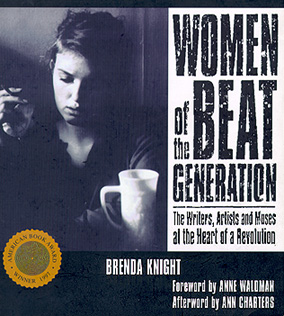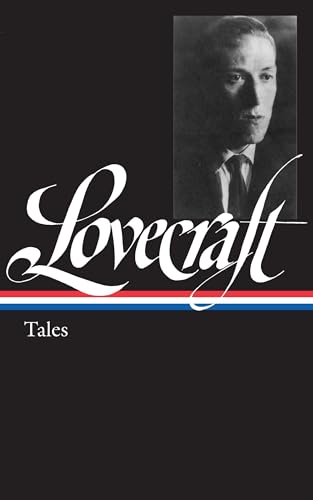Friday, January 25, 2008
Saturday, January 19, 2008
Beat Odds 'n' Ends

* The pulp magazines that were popular (and a popular influence on) Jack Kerouac & his fellow Beats get a historical review here.
* There's a new collection of old pulp stories & novels that's just come out: The Black Lizard Big Book of Pulps , edited by Otto Penzler.

NPR has an online article about the book, which features works by Dashiell Hammett, Raymond Chandler, Carroll John Daly, Leslie Charteris & others. Recommended, but beware, there's a lot to read!
* There's also s site devoted to women who took part in the Beat Movement:
More Than Minor Characters.


* A previously published collection of interviews with William S. Burroughs & his artistic accomplice Brion Gysin has just been reprinted. And for those with further interest in Mr. Burroughs', um, unique way of looking at things, check this site out.

* Finally, here's my pick for the most insane pulp magazine character concept I've ever come across: The Spider! The stories I've read of this character are packed with so much action that the author must've been high on a bender or something! If you get a chance, just follow the links listed on the site I've linked to & read the plot descriptions. The titles of each installment practically give it away! Kerouac and/or Burroughs must've come across this series at one time! Who knows what must've gone through their minds reading this stuff!
Update: A major publisher has begun reprinting Spider novels! And a less major one has also jumped on the bandwagon!
-Ed
Labels:
jack kerouac,
Pulps,
William S. Burroughs,
Women
Thursday, January 17, 2008
The Book That Turned Me Onto Jack Kerouac (No, Not That One!)


I submitted this review for Greenwich Library's Staff Picks feature:
Published shortly after the success of the author’s groundbreaking classic On the Road, but written years earlier in Mexico (when Kerouac hung out –and got high- with William S. Burroughs), Doctor Sax is a touching account of one young boy’s flight into fantasy and his subsequent path to adulthood. Young Jacky Duluoz (Kerouac’s literary alter ego), a French Canadian boy growing up in Lowell, Massachusetts in the early 1930s, escapes from the pressures of family & school into a world where vampires, werewolves & other creatures of the night converge and only the mysterious “Doctor Sax”, a combination of the Shadow & the Wizard of Oz, can stop them. But the boy’s growing perception of his actual surroundings may be young Jacky’s real solution. Written in an even more audacious style than his other books (one section is detailed as stage directions for a play), Kerouac uses a variety of influences from his childhood (Walter B. Gibson’s aforementioned pulp magazine character, “The Shadow”; L. Frank Baum’s “Oz” books, the short stories of H.P. Lovecraft; radio thrillers & others) to craft a touching tale of a boy’s leaving behind the things in his past to embrace approaching adulthood & maturity.
I'll have more to say about why this particular book got to me, as well as how it reintroduced Kerouac and his fellow Beats to me, in a future post. Meanwhile, I wanted to note this mention of the 2CD set that came out in 2003 which I picked up first before reading the book. (Sadly, the set is currently out-of-print.) And here's a link to recent reprintings of one of the central influences on both the book and Kerouac himself. -Ed


Friday, January 11, 2008
Grace Metalious' Peyton Place: The Great Lost Beat Novel?!?

Back in October, when I attended the Jack Kerouac Conference at the University of Lowell in Massachusetts, I took note about how one of the featured speakers made this interesting observation:
UConn Professor Richard Pickering came on to deliver his paper “It’s Like Turning Over a Rock with Your Foot: On the Road and Peyton Place as Pandora’s Boxes”. Citing the popular culture of 1956-57, when Detroit had more cars being built, Elvis was on the radio, and television was showing Civil Rights protests to a wide audience, Professor Pickering argued that the success of Grace Metalious’ Peyton Place (which was considered quite shocking at the time due to its depiction of rape, infidelity and overall sexuality), released in hardcover in ’56, not only engendered a ready-made audience of teens as well as adults waiting to pick up the cheaper paperback edition published the following year, but also whetted their appetites for Kerouac’s On the Road (also released in 1957). Pickering also made a persuasive augment for the enduring merits of the Metalious novel, citing his assigning it to his students, who found they couldn’t put it down.


(Above, top: Peyton Place book cover. Below: Grace Metalious)
Of course Professor Pickering's (current day) students couldn't put the book down! After 52 years, Peyton Place still rocks the world with it's alternatively adult and near-sordid depiction of the dark secrets underneath a small (slightly fictional) New England town sometime in the 1930's, as seen through the eyes of central character, young teen ager Allison MacKenzie. There's alcoholism, incest, murder, teen age sex, illegitimate births and so much else going on that it's easy to forget Metalious has managed to craft a riveting narrative that holds the audience's attention, even when shifting from one group of characters (there's quite a large cast) and situations to another. (Said scene shifting, along with some purple prose, are probably the only real drawbacks of the novel.) And the language! Except for the likes of such then-popular authors Norman Mailer, James Jones and Mickey Spillane, no best selling author ever used such graphic and profane words in a popular novel that wasn't male-oriented. (I may be wrong, but, aside from various female pulp writers using male-sounding pseudonyms, Grace Metalious may be the first prominent female novelist to write such coarse-yet-realistically "rough" dialogue in her works. Can anybody out there confirm this?)

Metalious' then-bold and frank description of adult situations caused quite a bit of outrage in it's day. Most critics hated the book, yet the public made it an instant best seller. More importantly, when Kerouac's On The Road came out in hardcover the following year, it was joined by the first paperback printing of Peyton Place, which, thanks to it's lower price and smaller size (easier to hide it from one's parents or spouse)became even more accessible to readers eager to see what the fuss was about. Meanwhile, those that had already read the book moved on to the similarly mature-themed Road novel, itself already getting its' fair share of outrage.
(Below: Covers of Kerouac's and Metalious' follow up novels.)


But is Peyton Place really "Beat"? Well, just barely. Again citing the mature themes of the book mentioned earlier, the novel also shares, especially with the works of Kerouac and the poetry of Allen Ginsberg, a central character (Allison) who wants more out of life than what's being offered, while becoming aware of the dark underbelly of her surroundings. That's silmilar to the desires Road's protagonist Sal Paradise carries. Sal, like Allison, has to grow up and mature to survive, while still seeking some kind of internal satisfaction/justification for his existance.
Grace Metalious probably didn't see herself as a Beat writer. But her most popular novel (a sequel, Return to Peyton Place, came out in 1959, followed by one or two lesser books before her untimely death, from alcoholism at the age of 39, in 1964)certainly shares many Beat characteristics. (And yes, the manner of Metalious' death does prefigure and parallel that of Kerouac's, who died of similar circumstances five years later.)
The library only carries the first Peyton Place novel. I'll ask the video librarian about getting the 1957 movie version, currently available on DVD, for the catalog.

(Peyton Place and it's immediate sequel were made into very popular, if slightly sanitized, movies in 1957 and 1961, respectively. A quite popular television serial (which I barely remember), starring Mia Farrow as Allison, and featuring a then-unknown Ryan O'Neal, aired from 1964-69 on ABC. Some years back, Barbara Delinsky penned a sort-of sequel to Metalious' novel, Looking for Peyton Place in 2005. As for the tragic life and times of Grace Metalious, click here.)
-Ed
(Below: Photo of the 1960's Peyton Place television cast. Currently, there are no plans announced to release the series on DVD.)

(Clockwise from right: Ed Nelson, Christopher Connelly, Ryan O'Neal, Barbara Parkins, Mia Farrow and Tim O'Connor.)
Labels:
1956,
1957,
Grace Metalious,
On The Road,
Peyton Place
Monday, January 7, 2008
In Defense Of Skidoo
"If you can't dig nothing, you can't dig anything...you dig?"
That indispensable pearl of wisdom is uttered by one of the characters in Otto Preminger's 1968 "counterculture" film, Skidoo, which I discussed last week. The aformentioned line also closes blogger Tim Lucas' persuasive arguement in favor of the film, which you can read by clicking here . And yeah, the line does sound "Beat". (Strange bedfellows and all that...)
Me, I kinda liked the film's bouncy theme song (sung by Carol Channing!) myself. And those end credits.....! -Ed

That indispensable pearl of wisdom is uttered by one of the characters in Otto Preminger's 1968 "counterculture" film, Skidoo, which I discussed last week. The aformentioned line also closes blogger Tim Lucas' persuasive arguement in favor of the film, which you can read by clicking here . And yeah, the line does sound "Beat". (Strange bedfellows and all that...)
Me, I kinda liked the film's bouncy theme song (sung by Carol Channing!) myself. And those end credits.....! -Ed

Friday, January 4, 2008
Covers Of Beat Books (Boy, I Wish I Had Some of These!)


My interest in the Beats hasn't waned. Due to outside circumstances, a post I planned to do on the role women played in the creative processes of Jack Kerouac & the other Beats has been delayed. I'm currently searching for a copy of Brenda Frazer's reissued post-Beat 1969 novel/memoir Troia as well as reading a collection of essays on female Beats (Girls Who Wore Black: Women Writing The Beat Generation, edited by Ronna C. Johnson & Nancy M. Grace; Rutgers, 2002) so I'll know what I'm talking about.

Meanwhile, to whet the appetites of those interested in the Beats, I'd thought I'd showcase some covers of both pivotal works & various cash-in items. Enjoy!






-Ed
Bad Movie Alert!Update


If you're up very late tonight, say around 2 am, and you have cable, you have to tune into the Turner Classic Movie channel for this gem:
Skidoo (1968)
A retired gangster has to pull off a hit when his daughter is kidnapped.
Cast: Gleason, Carol Channing, Frankie Avalon. Dir: Otto Preminger. C-98 mins, TV-14
So bad the family of late director Otto Preminger (Laura; Anatomy of a Murder, In Harm's Way)has refused to have it released on home video! Find out why tonight! (For more info, click here.)
(Interest in Mr. Preminger and his work is currently being revived via Foster Hirsch's new biography, Otto Preminger:The Man Who Would Be King, which the library carries, and by the showing of several of his much better classic films at New York's Film Forum. Go here for their film schedule.) -Ed
Subscribe to:
Comments (Atom)
